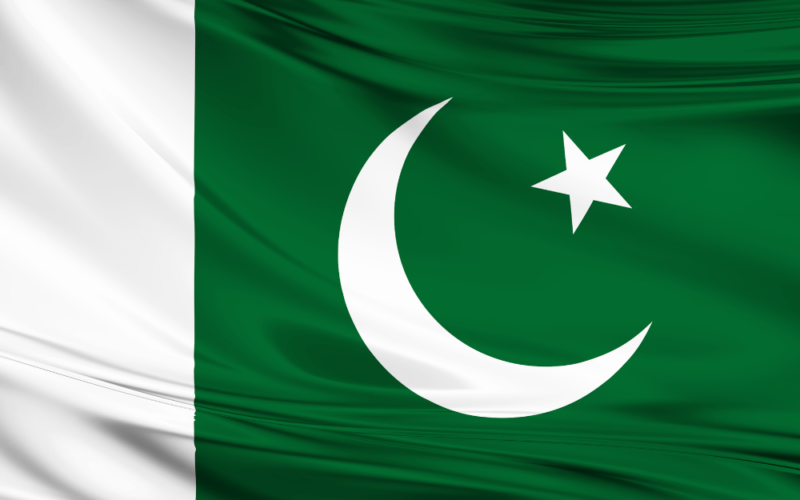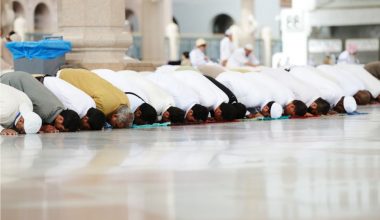I feel amused when someone criticizes dynastic political families in Pakistan. Amused, because the real problem lies somewhere else and is a lot more serious. Dynastic politics is a just a small symptom of masses’ bondage to the elite of the country.
Even if power were to desert Sharif, Zardari or another such family its reins would still circulate solely among the elite hands of the country. The only freedom, masses are allowed in this system is to create another idol from the elite when a hero fails to deliver. There is a huge chasm between the lustrous democratic ideals -such as all the country’s citizens are equal and possess equal right to education, health, jobs, and politics- and the fetid undemocratic reality.

Pakistan hasno real “democrats” or “autocrats,” instead it is ruled by an elite arrangement. Political and military elites have converged to form the establishment that boils down to a few hundred largely interrelated families. That’s why no ruler has to date shown any interest in tackling social inequalities, such as implementing land reforms, cutting down imports of luxury life style consumer items, or forcing fair taxation in a country where over 60% of the rural population are landless and over 40% of the urban population live in slums.
The primary goal of this elite is to perpetuate its dominant status in both socio-political and socio-economic spheres. They are the champions of consolidation of power and personal enrichment. The result is simple. Whether political parties or the army rule the country, it is the interest of one and the same class that is protected, as manifested in slack tax imposition, no land reforms, high level of military expenditure and so on.
From its early days, people running the affairs of the State in Pakistan decided that the country’s development would not be financed through taxes, because the rich could not be compelled to pay. Hence the State never truly implemented fiscal policies to enable transfers from the richest to the poorest segments of population and to finance such elementary public services as education and health. Instead, the development was and is funded by foreign aid or borrowings, turning the country into a client state.

The country runs the risk of compromising its sovereignty at the hands of its donors -currently the United States, Saudi Arabia, and China. They know as long as they continue to pay, they will obtain concessions from Pakistan even at the expense of its sovereignty. This is the primary cause of the huge deficit of self-esteem in the nation as it instills deep feelings of weakness, inferiority, and inadequacy.
The creation of Pakistan was largely dictated by sociological dynamics. The idea of Pakistan was first conceived by an Urdu-speaking upper caste elite fearing its marginalization. This aristocracy embodied the legacy of Mughal empire and lived mostly in the Ganges Plain from Delhi to Bihar – the true vessel of Muslim civilization in India. Some historians, like Hamza Alavi[1] and Paul Bras[2], argue that the League’s cry that Islam was in danger in 1930s-40s was a political strategy used by elite groups to mobilize Muslims masses.
Without entirely agreeing with these views, it can be said that the idea of Pakistan was formed by an elite that was motivated by vested interests of a specific upper caste Islamic culture. This is why an understanding of Muslim separatism in the 1930s and 1940s subcontinent cannot be achieved without considering how class needs and societal dimensions worked in tandem.
Up to the start of the twentieth century, Muslim elite was way over-represented in all spheres of power. Indian Muslim separatism took roots in the wake of 1857 Rebellion when the interest and status of this elite group became jeopardized. Sir Syed Ahmed Khan felt this pain and considered Muslims of India as a political unit. Some of his words reflecting his dismay at the decline of Muslim elite’s legacy of the Mughal power are as follows.
“Would our aristocracy like that men of low caste or insignificant origin, though he be a BA or an MA, and have the requisite ability, should be in a position of authority above them and have power in making laws that affect their lives and property? Never.”[3]
“In your opinion, can the Rajput or fiery Pathan, who do not fear the noose, the police or the army, live peacefully under the Bengali?”[4]
“I am a Muslim, an inhabitant of India and descended from Arabs… The Arab people neither seek, nor do they desire that instead of ruling themselves, someone else should rule them.”[5]
“Our nation is of the blood of those who not only made Arabia, but Asia and Europe to tremble. It is our nation which conquered with its sword the whole of India.”[6]
In 1908, Sir Ali Imam, who was elected as the President of Muslim League at Amritsar Annual Session, declared that “the uncivilized portion of our country classified as Hindu” should be excluded from power. Such thoughts made it appealing for the government to shape the Muslims into a political force loyal to the British crown as a counterweight to the Congress. Effectively, Aligarh movement was the precursor of Pakistan.
Hindu and Muslim communities had never overcome their cultural differences and the Muslim nationalism largely proceeded from a longstanding gulf between the two communities. A self-interested Muslim elite used it as an opportunity to use Islamic symbols of identity to rally Muslim masses to its cause. Muslim League, in its identarian ideology, continually mentioned the social, political, and historical significance of the elite it represented. At its core it represented a culture of entitlement that was quite divorced from democracy. While their leaders were not particularly religious, the party cadres used Islam as a tool for ethno-nationalist mobilization, drawing on religious sentiments of the masses that largely rhymed with the slogan “Islam in danger.”
While the elite in the Muslim majority areas was already in power and had little to fear from Hindus, the Muslim elite in the UP and Bombay Presidency followed this strategy with the aim of getting themselves a state to govern. Indeed, the idea of Pakistan first took shape in the Muslim minority areas of British India, like the UP.
It can be argued that some of these thoughts were in sync with their times as racist and ethnic biases fueled politics in almost every country around the world. Unfortunately, this elitism continued to flourish in Pakistan at the expense of the rule of law and human rights. This conservative elitism has been a source of instability in conflict with popular aspirations for greater equality and freedom.

In its first two decades, Pakistan was controlled by two groups: Punjabis dominant in the military and the bureaucracy and Muhajirs overrepresented in the business, administration, and government. Bot these groups, generally, considered Bengalis as inferior to them. For example, in 1963, East Pakistan, despite being about 54% of the total population of the country, represented 5% of the Army officers, 5% of Navy officers, and 11% of Air Force officers. The situation was not much different in the government and other seats of power. Some of the few Bengalis in the top leadership of Muslim League were also huge landlords, often of non-Bengali descent. One such example is Khawaja Nazimuddin, who was from a very wealthy Urdu speaking family of Kashmiri descent that was settled in Dhakka. Another prominent leader Huseyn Shaheed Suhrawardy, though a Bengali, also came from a highly aristocratic family. The elite that had envisaged Pakistan to preserve their socio-political interest and patrician culture had a deep sense of entitlement. Hence, they refused to subject themselves to the law of numbers and continually contrived to marginalize Bengali majority from the East Pakistan.
What binds together Pakistan’s elite is a sense of class manifested in inter-marriages that structure the elite in a society where social hierarchy is driven more by financial means than by status. The quest for enrichment has also gripped the feudal lords as well as the Army officers. Populists (like Bhuttos and Sharifs) claim to work for the people in order to better help the elite to retain power. Imran Khan, a leader from the middle class, wittingly or unwittingly, has also been reduced to being an instrument of elitist interests.
Probably the only silver lining of elitist rule in Pakistan is that, even though they misuse religion for their intents, the elite does not allow the Islamic parties to do well at the urns. Simply because it does not suit them. However, it is a dubious advantage at best. Widening of inequality and absence of leftist forces has contributed to Islamization as in the eyes of a common citizen it offers an alternative to an oppressive elite. If Islamization is viewed by many as an agent for social change, it is mainly because of this age-old elitism of Pakistan’s rulers including feudals, military officers, bureaucrats, and businessmen alike.
[1]“Class and State in Pakistan” 1983. “State and Ideology in Middle East and Pakistan” 1987.
[2] “Language, Religion and Politics in Northern India” Cambridge University Press, 1974
[3] Farzana Shaikh, “Community and Consensus in Islam” 2012 p. 115
[4] Faisal Devji, “Muslim Zion: Pakistan as a Political Idea” p. 54
[5] Farzana Shaikh, “Community and Consensus in Islam” p. 116 [6] Ibid







